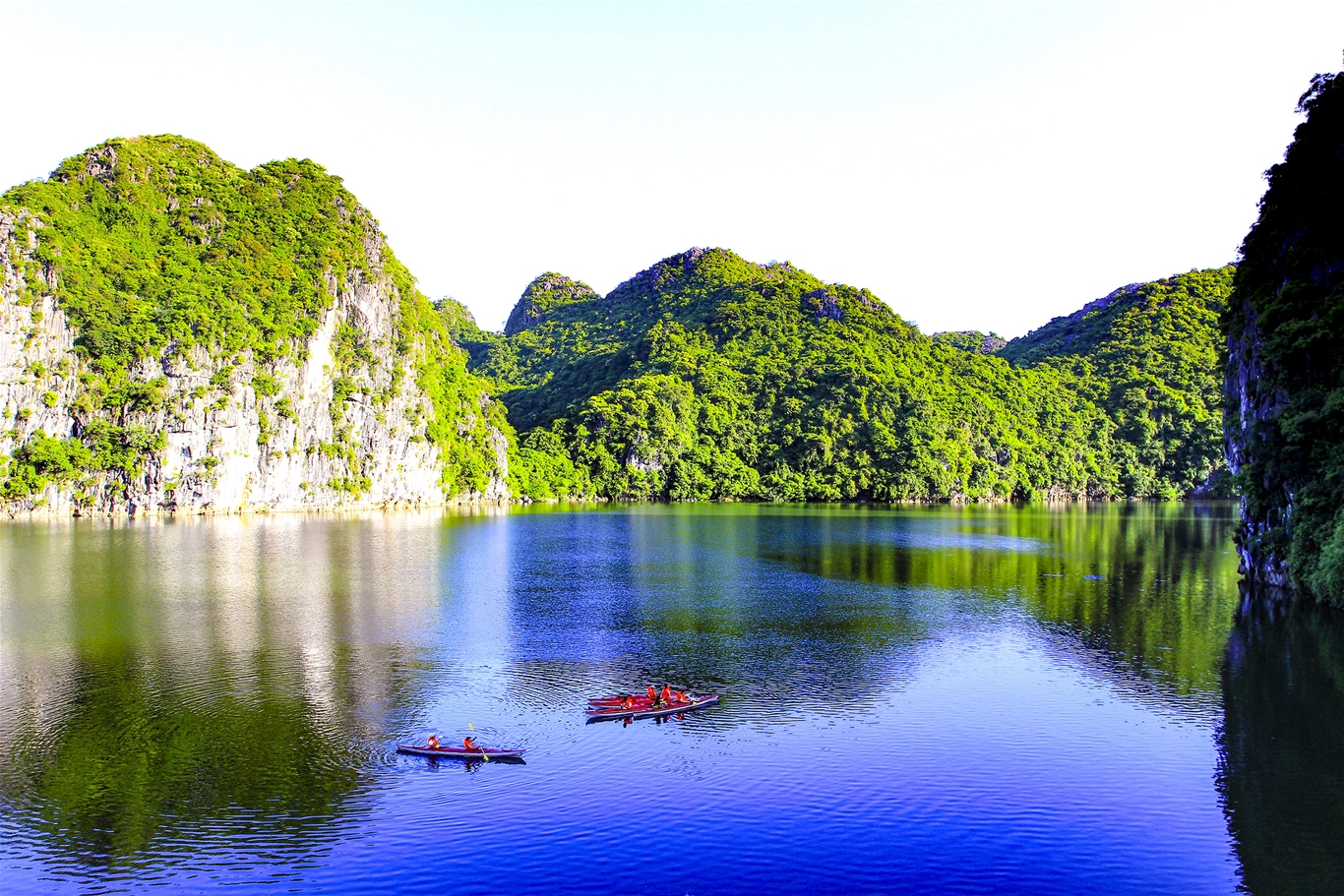

02/11/2021
Cát Bà Biosphere Reserve (BR), designated on 2nd December 2004 by UNESCO has a total area of 26,241ha (of which island area accounts for 17,041ha and the sea 9,200ha) including around 366 limestone islets of Cát Bà Archipelago in Hải Phòng City.
Cát Bà BR’s rich biodiversity is attributed to its forest, marine, island ecosystems, thus giving a national and international significance. Current studies have recorded that as many as 3,156 species plants and animals are available, namely 1,843 land species and 1,313 marine species. Land species include 54 species of animals, 160 species of birds, 47 species of reptiles, 21 species of frog and 1,561 higher plants. Sea species consist of 196 species of fish, 193 species of coral, 538 species of zoobenthos, 89 species of zooplankton, 23 species of mangrove plants, 75 species of seaweed/algae, and 199 species of plankton plants. Even extremely rare species such as Cát Bà lingers (yellow headed) being one in 25 primates most subject to extinction risks according to IUCN Red List. In 2011, UNESCO has nominated Cat Ba archipelago to be one of World’s Nature Heritages.
Monkey Island is one of the must-see places when traveling to Cát Bà
Cát Bà Archipelago is one of the most typical examples of the natural landscape eroded by the sea. 366 islands have recorded history of sea events, karst and history of ancient Việt Nam people. Fenling, fengcon and varied shapes of stones best illustrate strong internal movements of mature karst, once developed on lands, then eroded and altered by the sea.
Narrow beaches with golden sand are romantically blended with valleys, accentuating the spectacular and wild landscape. A geopark is being shaped in Cát Bà to further study and enhance geological value of the area.
Long standing indigenous culture with its own identity
Cát Bà indigenous culture is a fine example for the tradition of unity and support of people in the Northern coastal region. Many traditions remain strong in modern life such as festivals of fish village, boat rowing festival and festivals of wooden horse. Cát Bà major island has so far had 77 archaeological relic sites discovered. For example, Cái Bèo Relic site has cultural remains dating from 6,400 to 4,200 years, Đá Hoa Cave is the place where fossil of Pongo-Pygmaeus, porcupine and rhino was discovered. Relic of citadel of Mạc Monarchy was also found.
Cát Bà BR - a model for sustainable development
Cát Bà BR is considered one of the most dynamic in the network of MAB Việt Nam with many qualities’ economic incentives such as brand recognition of Cát Bà BR, fund for the sustainable development of Cát Bà BR with a participation of concerned governmental agencies, institutes, private businesses, non-governmental organizations and the local population. Cát Bà BR was also the first in the world to pilot managing the BR like laboratories with an aim to study about sustainable development.

Charming beauty of Cát Bà Archipelago
A visit to Cát Bà BR will provide tourists a chance to participate eco-community-based tours in Việt Hải, Xuân Đám, Hiền Hào, Khe Sâu communes in the buffer zone. Similarly, tourists can choose environmentally friendly tours in which they can do a wide range of activities such as visiting, discovering caves, watching birds, and animals in Cát Bà National Park, hiking, kayaking, scuba diving and fishing or select spirit-based tours, taste local specialties such as trying Gia Luận orange, Liên Minh chicken, forest honeybee, Hibicus tea and Cát Hải fish sauce.
In Cát Bà BR, where ideas and experience are exchanged and new ideas are tried out, development and conservation are well reconciled. Cát Bà, a living laboratory for researching the sustainable development is worthwhile destination for tourists.
Lê Thanh Tuyên
(Source: Vietnam Environment Administration Magazine, English Edition III - 2021)